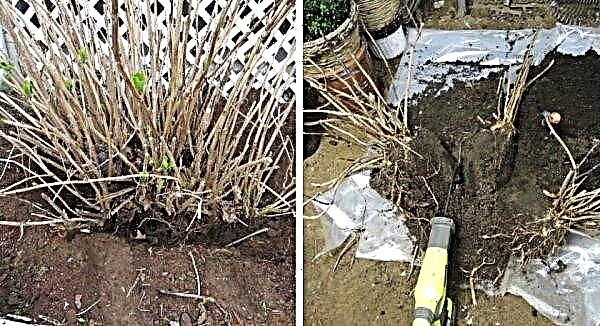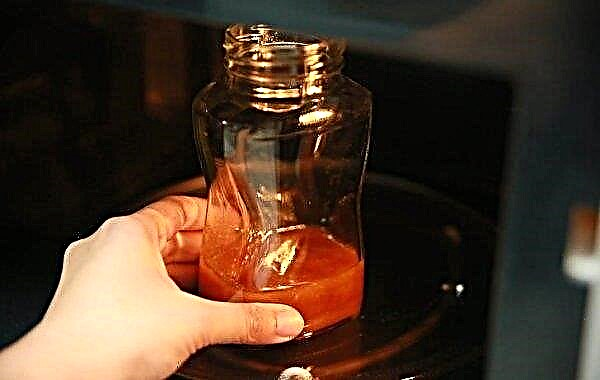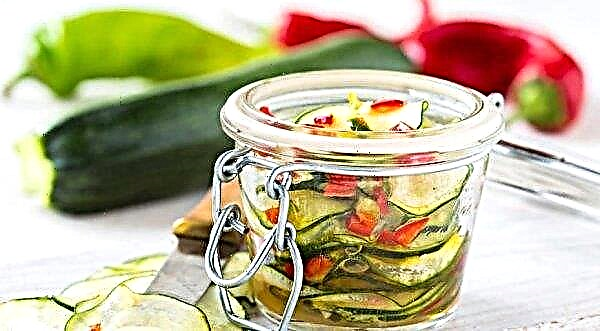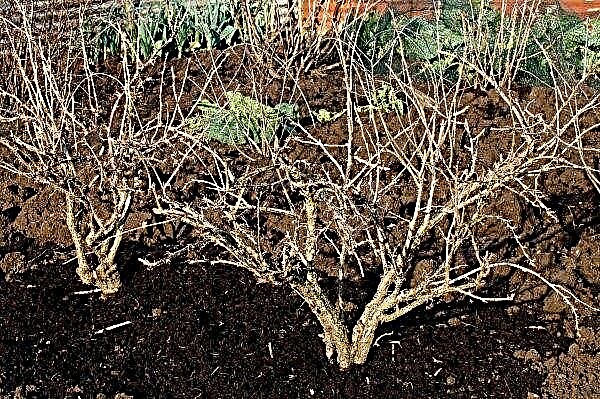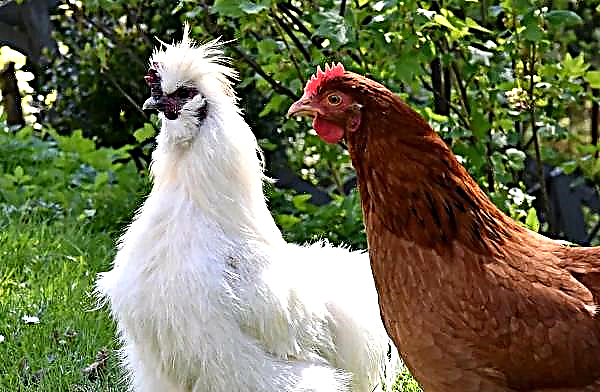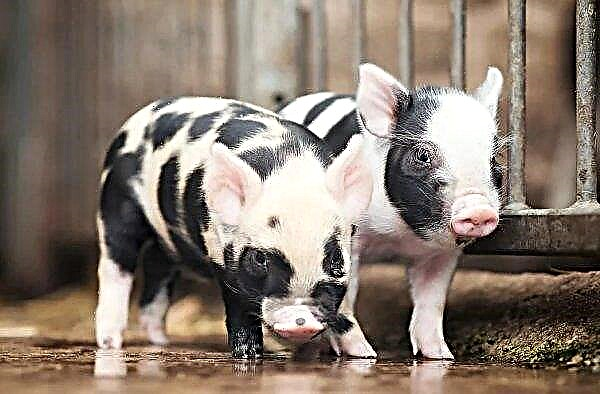Tulip-shaped geranium differs from other varieties of geraniums (pelargonium) in its special tenderness. It can be grown both in the garden and in the flowerpot. If you decide to breed this type of plant at home, it is important to understand all the intricacies of cultivation and care.
Botanical description of the plant
All tulargoid pelargoniums, regardless of the particular variety, have distinctive features.
The plant has a wide rhizome, which has the property to grow widely. The stems can have different heights, since both ordinary and dwarf varieties belong to the pelargonium of this species. The plant is notable for unusual flowering. The buds are in the form of slightly open tulips. Color varies depending on the variety, however, this is necessarily one of the shades of pink.
Did you know? Tulip-shaped pelargonium was bred in 1966 in Boston (USA) by breeders from the Andrea family.
| Root system | Developed rhizome |
| Stem | Up to 80 cm tall |
| Leaf shape | Oblong |
| Leaf color | Bright green |
| Flower shape | Tulip-like |
| Flower color | Different shades of pink |
Varieties
Breeders bred 13 different varieties of tulip-shaped geraniums, each of which has its own characteristics:
- Carmen Andrea. It features a bright red color of buds and dark leaves wavy at the edges.

- Conny. The flowers are painted in a light shade of pink with veins, slightly darker than the main color. The inside of the bud is darker. The leaves are bright and shiny.
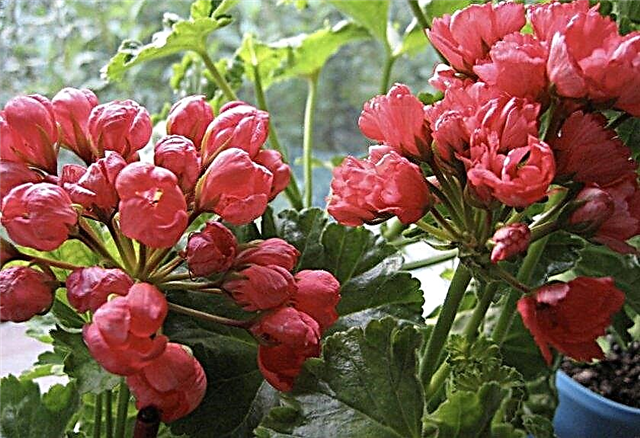
- Emma fran Bengstbo. The flowers are pale pink; leaves are light, slightly curled.

- Happy birthday Lilac buds (shade of pink) are located on low straight trunks. The edges of the leaves differ in wavy bends.

- Herma. On a low stalk there are 35–45 buds of a bright red-orange hue. The foliage is light, light green.

- Linnea Andrea. The stems of plants belonging to this variety are small. Each inflorescence consists of 13–16 purple buds.
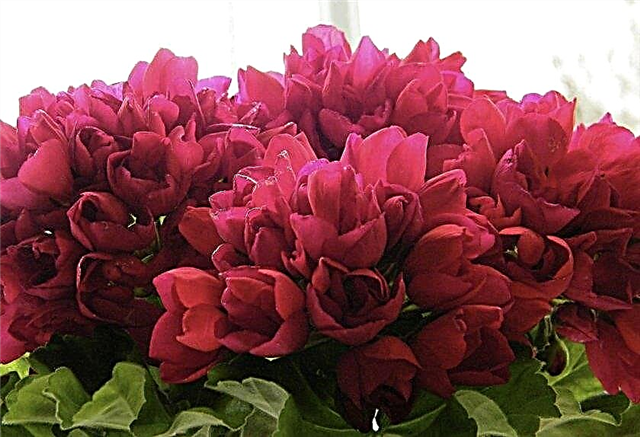
- Marbacka Tulpan. The color of the buds is close to cream pink. The leaves are green and curled.

- Marie-Louise This species is distinguished by light pink buds with a white frame. The foliage of this pelargonium is dark.

- Mrs Charles. Plants belonging to this variety are characterized by extremely small size and raspberry-red buds with white patches.
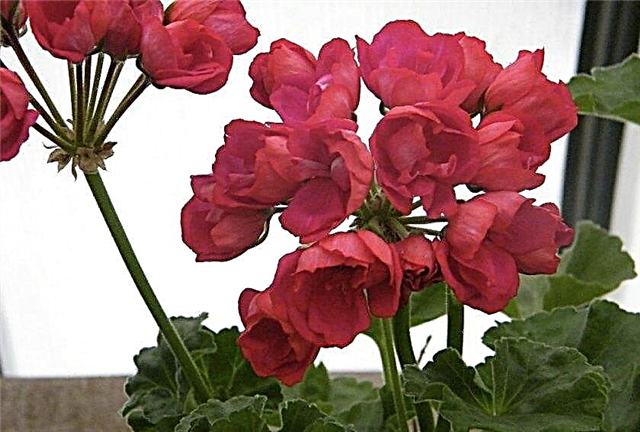
- Patricia Andrea. The flowers have a bright pink color, close to red, with light veins. The leaves are dark.

- Pink Pandora The barrel-shaped buds are pink. They are darker inside and lighter, with veins - outside. The foliage of the plant is light green.
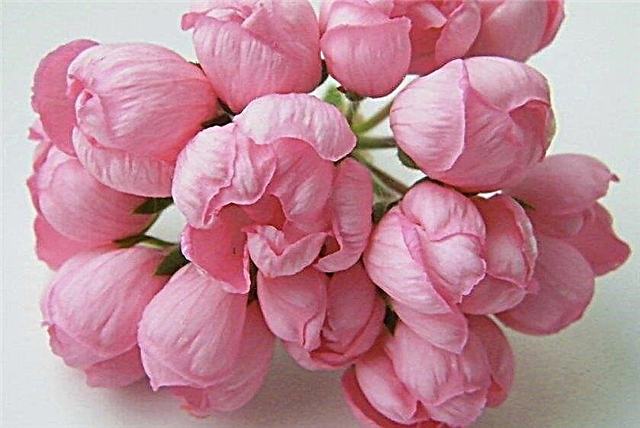
- Red Pandora A medium-sized species of geranium with pink buds pierced with red strokes. The trunk and foliage are very saturated colors.
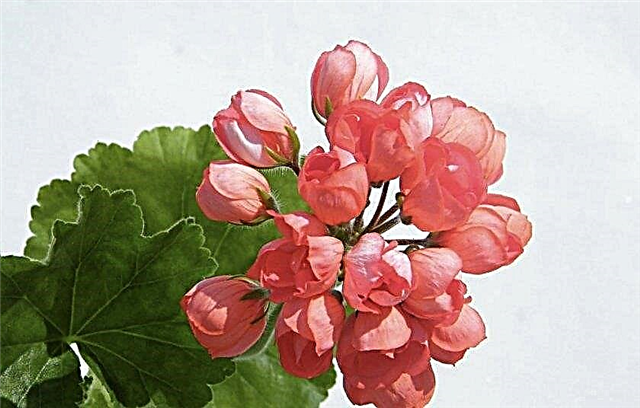
- Viktoria Andrea. The variety differ from others in the scarlet red color of the petals, they are white-streaked. The green part of the plant with a brilliant shimmer, dark.
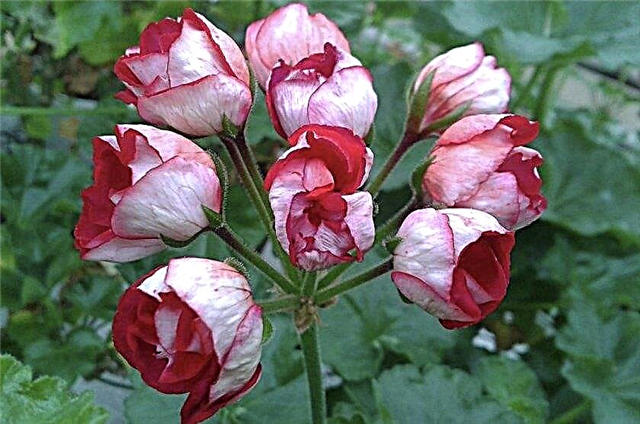
Did you know? Almost all varieties of tulip-shaped pelargoniums were named after female breeders.
Growing conditions
Proper cultivation of this type of geranium must necessarily be associated with the arrangement of the correct microclimate. It is important for the owner to place the flowerpot in a place with the temperature regime and humidity level necessary for the development of the plant.
Accommodation
The territory on which pelargonium will be located should be adequately covered. It is important to ensure that ambient light is in direct contact and to avoid direct sunlight. If the duration of daylight hours for some reason cannot be maintained naturally, the use of special lamps is recommended. This is especially important in the autumn-winter period.
You should also avoid heating appliances in close proximity to the pot, so it is better not to place a flowerpot near the battery.
Temperature mode
When creating the optimal microclimate, it is necessary to maintain the temperature regime in accordance with the established standards. For a geranium tulip-shaped thermometer in the warm season should not go beyond + 21 ° C– + 26 ° C in the hot season and + 14 ° C– + 16 ° C in the frosty period.
Air humidity
This type of pelargonium perfectly perceives humidity, optimal for humans, namely: 70-80%. It is better to maintain this level of moisture, since dry air can be harmful to the plant.
Home Care
Tulip geraniums need proper care. The flower should be regularly watered and fertilized, pruned and transplanted when necessary.
Watering
The frequency of watering depends on the season. When it's hot, the soil needs to be moistened every 2 days. With the onset of cold weather, watering can be reduced to 1 time in 7 days. Watering should only soil, while using water at room temperature. The type of watering is drip. To avoid waterlogging of the soil, you should use a pot with holes in the bottom and a tray in which excess water will collect.
Important! An insufficient watering of geranium is indicated by a change in the color of the lower leaves to brownish.
Top dressing
Fertilize the plant in summer and autumn. The optimal frequency of feeding is 1-2 times a week.  For tulip-shaped geraniums, potassium and phosphorus-based products are well suited. It is desirable that these were liquid fertilizers.
For tulip-shaped geraniums, potassium and phosphorus-based products are well suited. It is desirable that these were liquid fertilizers.
Pruning
Pelargoniums of this species must be formed by trimming. It should be carried out in the spring season. The procedure is to get rid of old stems. It is also important to remove bulky shoots. When trimming, make sure that each stalk remains with at least five buds. After removing unnecessary stems, the slices are treated with charcoal. You can also feed the plant immediately after the procedure.
Transfer
Transplanting pelargonium is desirable in the spring. The main criterion in this matter is excessive root growth, which can be seen on the root processes from the drainage holes. Usually every 3 years the plant is transplanted into another pot.
For transplanting, it is necessary to prepare the soil from a mixture of land, peat and sand. The pot may be of any material. Preference should be given to tanks with drainage holes and a size slightly larger than the previous one.
Important! It is undesirable to transplant geranium during flowering.
The transplant process should be carried out according to the following algorithm:
- Place drainage at the bottom of the new pot.
- Lightly water the soil in an old pot and carefully take out the plant.
- Move geranium together with soil to a new container and sprinkle with finished substrate.
- Moisten the plant after transplanting.

Breeding
Propagation of tulip-shaped pelargonium occurs through cuttings, dividing the bush or sowing seeds.
Cuttings
During routine pruning, it will be convenient to propagate pelargonium by the cuttings method. To do this, select a stem with at least 2-3 leaves and 1-2 internodes in the lower part. Next step by step:
- The processes are cut, left at a temperature of + 20 ° C– + 22 ° C until the cut-off place is twisted.
- In a small pot with a volume of up to 200 ml, drainage and soil mixed in equal proportions with sand are successively poured. You can also use a peat tablet.
- A cuttings are planted in a container.
- When new leaves appear and the root system grows, the plant can be transplanted into a larger container.
Video: Rooting Varietal Perlargonium
Dividing the bush
Division of the bush is suitable in the case when the geranium has a certain number of daughter stems. For this method of reproduction, it is enough to separate them from the main bush with a garden knife and plant them in a separate container, after processing the sections with activated charcoal. It is most convenient to carry out the procedure during transplantation of the entire plant.
Seed cultivation
Seed propagation can lead to the fact that the plant loses varietal characteristics in the form of color, shape of buds and leaves.
The procedure for growing seeds is as follows:
- Disinfect the seeds with a weak solution of potassium permanganate.
- Soak seed in growth promoter.
- Maintain seeds in water for 180 minutes.
- Prepare the substrate by combining 2 parts of turf land, 1 part of peat component and 1 part of sand.
- Disinfect the soil by keeping it in the oven at high temperature. You can also resort to disinfection with a solution of potassium permanganate.
- Pour the prepared soil into the containers for growing.
- Put the seed at a distance of 5-6 cm from each other in the substrate and cover it with 1 cm of moistened sand.
- Moisten the soil with planted seeds with a diffused stream of water.
- Cover the containers with polyethylene and place them near a source of stray light.
- After 13-14 days, when the seedlings sprout well, they are dived into small pots with drainage.
- When the stem reaches 13-16 cm, pinch the geranium.

Possible growing difficulties
The main difficulty that owners of tulip-shaped pelargonium face is diseases and pests.
Each attack must be displayed in a separate way. And these are:
- Whitefly Symptoms of whitefly are considered to be yellowed foliage, which is difficult to hold on stems. For treatment, spray the insecticide onto the affected part of the pot.
- Spider mite. This disease is determined by the presence on the foliage and stalks of the web and small pests. As in the case of the previous disease, an insecticide will help in the fight against ticks.
- Mealybug. In the case when the flowers are struck by light bloom, we can talk about the attack of the mealybug. An excellent tool for treating the plant will be a solution of domestic soap of their own preparation, which needs to be wiped off the infected areas.
- Rust. Its characteristic feature is the appearance of light circles on the green part of the plant. At the first symptoms, the diseased areas need to be removed, and the entire bush of geraniums treated with a fungicide.
- Gray rot. When a grayish coating appears on the foliage, they speak of the spread of gray rot. The treatment in this case should be the removal of diseased parts.
- Blackleg. This disease manifests itself in the form of blackening of the trunk. It starts from the root, spreads to the very top. To get rid of the disease, you need to cut off the top, sprout it, and when the shoot takes root, plant it in the soil.
 Tulip geraniums will decorate any home. With proper care and regular procedures, bright buds will blossom in time and will delight the eyes of the owners and guests of the house.
Tulip geraniums will decorate any home. With proper care and regular procedures, bright buds will blossom in time and will delight the eyes of the owners and guests of the house.














